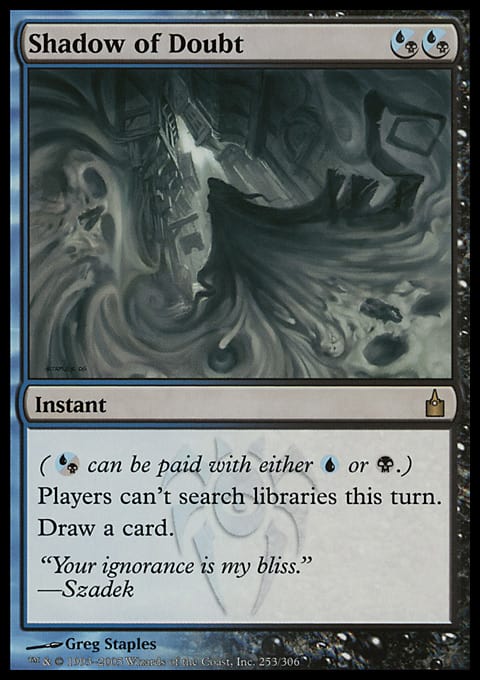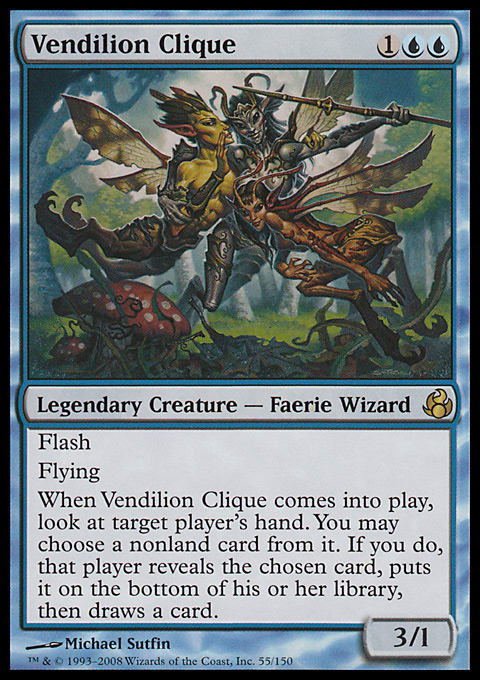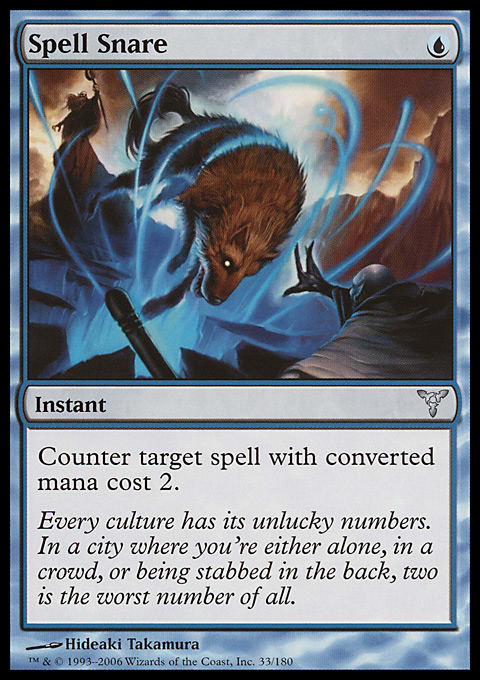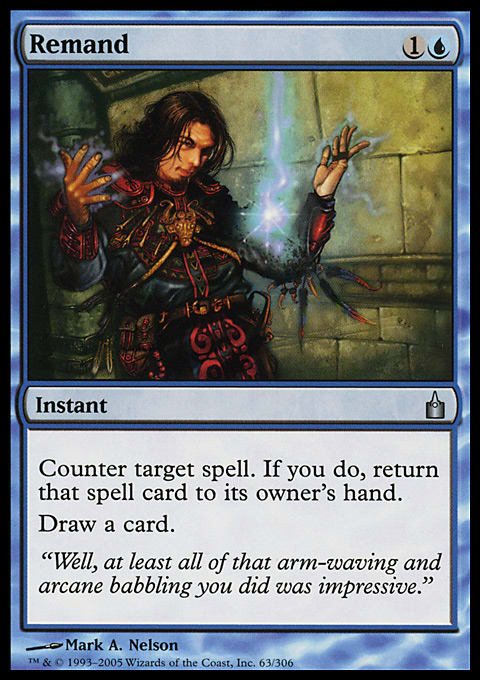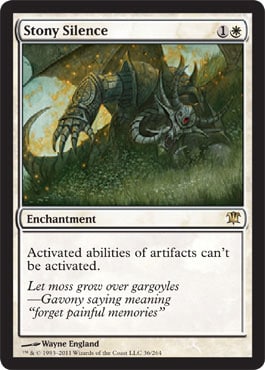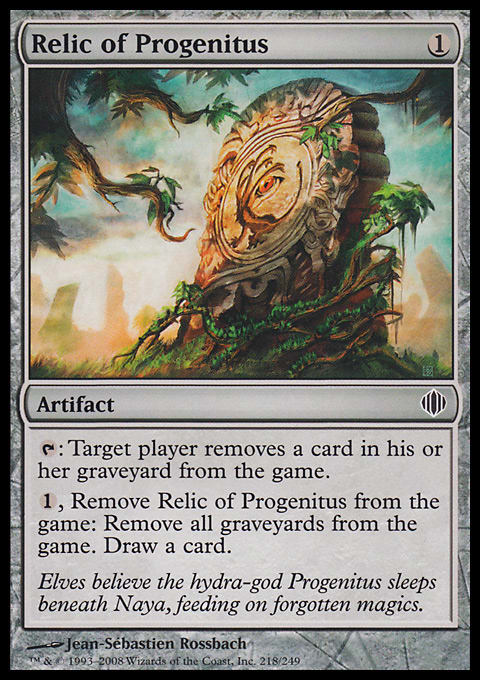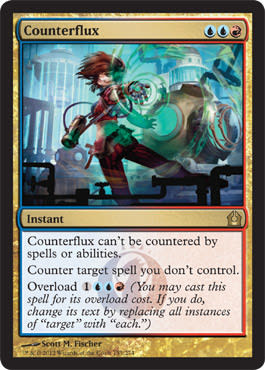Hey, folks!
It’s been a while since I wrote about Constructed, but I have an interesting take on R/W/U Control that may interest you. The reason I think it’s cool is that it plays all instants and creatures with flash! This article is being posted now because Grand Prix Minneapolis is just around the corner, and you will have a fun time with this.
Let’s begin with my list:
R/W/U Clash ? Modern | Kyle Boggemes
- Creatures (9)
- 2 Restoration Angel
- 4 Snapcaster Mage
- 3 Vendilion Clique
- Spells (25)
- 1 Sphinx's Revelation
- 2 Lightning Helix
- 2 Remand
- 2 Spell Snare
- 3 Mana Leak
- 3 Path to Exile
- 4 Cryptic Command
- 4 Electrolyze
- 4 Lightning Bolt
- Lands (26)
- 1 Mountain
- 1 Plains
- 3 Island
- 1 Glacial Fortress
- 1 Sacred Foundry
- 2 Hallowed Fountain
- 2 Steam Vents
- 2 Sulfur Falls
- 2 Tectonic Edge
- 3 Arid Mesa
- 4 Celestial Colonnade
- 4 Scalding Tarn
- Sideboard (15)
- 1 Path to Exile
- 1 Spellskite
- 2 Counterflux
- 1 Dispel
- 1 Negate
- 1 Lightning Helix
- 1 Wear // Tear
- 2 Stony Silence
- 1 Relic of Progenitus
- 1 Grafdigger's Cage
- 1 Tectonic Edge
- 1 Engineered Explosives
- 1 Magma Spray
I know a similar deck won the last Modern Pro Tour, but I’m here to explain why I strongly prefer a more proactive strategy in a format that’s as wild as Modern. Here’s Shaun McLaren’s deck for reference:
R/W/U Control ? Modern | Shaun McLaren
- Creatures (5)
- 4 Snapcaster Mage
- 1 Vendilion Clique
- Planeswalkers (2)
- 2 Ajani Vengeant
- Spells (27)
- 1 Spell Snare
- 2 Remand
- 2 Sphinx's Revelation
- 3 Cryptic Command
- 3 Electrolyze
- 3 Path to Exile
- 4 Lightning Bolt
- 4 Lightning Helix
- 4 Mana Leak
- 1 Anger of the Gods
- Lands (26)
- 1 Mountain
- 1 Plains
- 2 Island
- 1 Sacred Foundry
- 2 Hallowed Fountain
- 2 Steam Vents
- 2 Sulfur Falls
- 3 Arid Mesa
- 4 Celestial Colonnade
- 4 Scalding Tarn
- 4 Tectonic Edge
- Sideboard (15)
- 1 Crucible of Worlds
- 2 Relic of Progenitus
- 1 Izzet Staticaster
- 2 Porphyry Nodes
- 2 Stony Silence
- 1 Threads of Disloyalty
- 1 Celestial Purge
- 1 Counterflux
- 1 Logic Knot
- 1 Wear
- 1 Anger of the Gods
- 1 Timely Reinforcements
What’s Different?
Even though Shaun’s deck tries to win in a different way than I prefer, I still felt vindicated that R/W/U won that Pro Tour. I have been playing R/W/U for about a year in Modern because it’s a lot of fun, so it’s nice to see that others can win with it. Some of the lists I tried in the past were pretty stock and included such hits as Think Twice and Shadow of Doubt. This was not my idea of a good time because Modern has its fair share of unfair decks, and I couldn’t have been any fairer.
There were plenty of games against Storm, Splinter Twin, Birthing Pod, or any other unfair deck in which I couldn’t cast Batterskull or Ajani Vengeant because I would just die the next turn due to tapping out. How exactly did these decks manage to win when there were cards like Supreme Verdict that simply rotted in hand while the opponent was trying to win in another way? I just want to sit around and be reactive without having so many dead and clunky cards in each matchup. This statement is much easier said than done, but I believe my deck can do just that.
I think Shaun did a good job moving away from the clunk-fest that was the old R/W/U Control, but not completely. Anger of the Gods is powerful against Wild Nacatl, which was expected to surge in popularity but did not. Ajani Vengeant is great at tapping Birthing Pod and blowing up Zoo’s threats, but a 4-mana, sorcery-speed spell is not what I want. Three Cryptic Commands could be the correct number, but this deck has four main-decked Tectonic Edges, and that strains the mana. I would want to build this deck in such a way that I could play four copies of the powerful blue spell.
Vendilion Clique is my favorite way to win the game in Modern because it hits hard when combined with burn spells and Celestial Colonnade. It also lets you cycle unwanted Mana Leaks in the late game while taking critical combo pieces from your opponent. When you play Game 1 against a combo deck, the odds of winning go up dramatically when the Clique comes down on turn three. I tried to play four, but it was too many.
Restoration Angel was a way to circumvent the legend rule for Vendilion Clique. She performs a similar function when blinking out the Clique, and another 3-power flash creature is exactly what I want. It also feels pretty dirty to blink out Snapcaster Mage and flash back a Path to Exile or a Lightning Bolt for just 5 mana.
I didn’t like to see so many Tectonic Edge in Shaun’s deck because the reactive nature makes him unable to capitalize on mana-screwing the opponent. When your deck is controlling, you only want to blow up man lands or lands that contribute to the opponent’s overall game plan, such as the Urza’s lands. The additional Tectonic Edges make casting cards like Lightning Helix and Cryptic Command awkward, as previously mentioned.
Why Is R/W/U Flash the Control Deck for Me?
I don’t play cards like Anger of the Gods and Supreme Verdict because they don’t help me when I’m trying to win by attacking with Vendilion Clique. This deck is incredibly well-suited to play the control game by trading two-for-one with Cryptic Command, Snapcaster Mage, and Electrolyze. Aside from Path to Exile, the removal suite is able to deal direct damage to the opponent, which comes in handy when the opponent is playing combo or control. There are not many control decks that can turn their dead removal spells into secondary game plans against linear strategies.
How I Built the Deck
Some of the card choices and numbers may appear strange, but I assure you that there’s a method to my madness.
2 Spell Snare – This card is great against B/G midrange decks while also stopping key threats in Affinity and Storm. I don’t need to convince you this is a great counter, but three copies were too many because decks like Splinter Twin don’t rely on 2-drops. The point of this deck is to not sit around with cards you cannot cast, so I don’t want too many.
1 Sphinx's Revelation and 2 Restoration Angel – These can both be treated as late-game card-advantage engines, but the Angels can come down quickly and establish your clock. I tried this deck without any Revelations, but I liked drawing out the game and having a card I could play to. It’s also pretty awesome when you cast a Revelation and draw a bunch of burn spells and Snapcaster Mages; you don’t need to chain them, but you can with Snapcaster if need be.
3 Mana Leak and 2 Remand – Mana Leak can be pretty awkward in the late game, as it doesn’t deal damage, and it doesn’t cycle unless Vendilion Clique decides to help. I need some early counters so I don’t die to combo decks, so I play it anyway.
The fourth and fifth counters are Remands because they cycle and counter cards with flashback. In the late game, you can also Remand your own spell to save it from a counter. I recently played against a Twin, and my two Remands were insane because I countered my own spell in response to the opposing Remand (it’s like a Cryptic Command!).
This also works with removal spells if your opponent tries to save his or her creature; counter your own kill spell to recast it ahead of time on the stack. This is a techy play when you try to Path to Exile an Arcbound Ravager; the opponent sacrifices it to save the counters, and you can then Remand the Path back to your hand and save it for a better target. It’s also very good against Living End because putting back a spell the opponent never intends to cast is pure value. It’s also great against the Gifts Ungiven decks that try to win by flashing back Unburial Rites because it’s still removed from the game.
Since you can trick out your Remand, I want to play fewer copies because they really shine in the late game. I’m also not trying to close the game quickly, which makes the hard counter in Mana Leak preferable. This deck is weak to certain cards, such as Geist of Saint Traft, and I have to permanently answer it.
3 Path to Exile – I really like this card, and I side in the fourth copy in many matchups. When I have so many Paths in my deck, the value of Mana Leak diminishes even faster. I also can’t do anything useful with it against control and combo, so I don’t want to flood out on them in Game 1.
2 Lightning Helix – Since Tectonic Edge and Island laugh at me when I want to cast this card, I only play two copies. It’s a great spell to flash back with Snapcaster Mage, but it’s a spell that I can’t rely on early in the game. I tried to play fewer Islands, but Blood Moon is a real problem for this deck. I play the third Helix in the sideboard to make Zoo an even better matchup.
4 Electrolyze – While Deathrite Shaman has been banned, there is still plenty of value for this spell. I am able to take out larger threats when I combine then with damage from Snapcaster Mage in combat or a Lightning Bolt. It’s important to maintain card velocity because this deck doesn’t play cards that exclusively draw cards outside of the single Sphinx's Revelation. The fourth copy of Electrolyze is the only card I’m considering changing. Depending on your expected metagame, you could change it to a Counterflux or a Remand.
The Sideboard
I don’t want to go into sideboard-specific cards because I try to avoid setting that into stone for myself. This deck is filled with singletons, and I arrived at them for a reason. I want to discuss the sideboard like this because it may not be the correct choice for your local metagame.
I would like to caution against building a sideboard for something other than the expected field because your perception of the metagame is tainted by your recent matchups. For example, if you play against control three times in an eight-round Pro Tour Qualifier, that’s not a representative sample of how much control you should expect in the future.
Make sure to do some digging online, and see what decks are being discussed before the sideboard becomes slanted too far in one direction. Trying to forecast metagames is difficult, so there is no point in over-boarding for a specific matchup. Even if you know what you will face with your fortune-telling abilities, you also want to avoid diluting your deck. I recently beat a Jund deck at Friday Night Magic with Esper Control when my opponent boarded in fifteen cards! The lesson to be learned is that I actually lost Game 1, but I won the post-boarded games. Sometimes, you can be your own worst enemy when it comes to sideboarding.
You will notice that all fifteen of the sideboard cards are cheap answers so you don’t have to take out your heavy hitters such as Cryptic Command and Restoration Angel. The only easy part about sideboarding with this deck is when you are able to take out Path to Exile against Storm or Spell Snare against Living End. You have a ton of room to modify the deck to your liking, and it is ultimately decided on your preparation for the matchup.
Let’s get down to some of the specific choices:
1 Relic of Progenitus and 1 Grafdigger's Cage – Relic is in the sideboard for decks that use Tarmogoyf, Scavenging Ooze, and Knight of the Reliquary. When you play against midrange creature decks, you don’t want cards like Rest in Peace even though it could shrink opposing threats. Attacking the graveyard is not your primary game plan, and that makes the cantrip useful.
Snapcaster Mage is also the backbone of the deck. It’s very easy to run away with card advantage when you are blinking out Snapcaster Mage; Cage prevents this from happening, so bringing in this artifact can be dangerous. This is a mistake I see players make very often: ’boarding in narrow cards such as Rest in Peace and Grafdigger's Cage when it isn’t devastating. Cards like these don’t replace themselves, so it has to be very strong in order to justify boarding it in.
I play Grafdigger's Cage over Rest in Peace because I want another answer to Birthing Pod. This card is different than Stony Silence because it also stops Chord of Calling. I know it dies to Abrupt Decay, but that’s why I overload my opponents with permanents that stop their key cards. It also shuts off Past in Flames, Faithless Looting, and Desperate Ravings out of Storm.
1 Engineered Explosives – You have access to oodles of sweepers like Wrath of God, Hallowed Burial, and Anger of the Gods. I like Engineered Explosives because it can kill Etched Champion against Affinity and Goblin tokens out of the Storm sideboard. At first, I was afraid of Wild Nacatl, but the Zoo matchup was favorable even when I was being land-screwed, so I opted for a more flexible sweeper. It’s not all fun and games since a Stony Silence will prevent you from activating it against Affinity.
1 Spellskite – I like the synergy between Restoration Angel and Spellskite. The Boggles matchup can be tough without a hate card, and this has applications elsewhere. I will board this in against Zoo because it can block the early pressure and eat a burn spell. When this little Horror is removed by Path to Exile, it feels pretty good, too. The Infect matchup is also pretty dicey even though R/W/U is full of kill spells, and this is a great tool against them.
2 Counterflux, 1 Negate, and 1 Dispel – Counterflux is awesome in Modern because most combo decks protect their lethal spells. It’s also a good card to ’board in against decks like Birthing Pod because Mana Leak is lackluster, but you still want to counter dangerous threats.
I began with two Dispel and zero Negate, but this deck is weak to Blood Moon. Storm decks have access to Blood Moon in the sideboard and can cast it early off a ritual. Negate is also fine for countering an opposing Pyromancer Ascension.
1 Tectonic Edge – There are some decks against which I want a twenty-seventh land. You can also swap it for another land against Affinity or Infect to hit Blinkmoth Nexus or Inkmoth Nexus. In control mirrors, you can gain an edge by killing the opponent’s Celestial Colonnade. Don’t forget there will be some form of Urzatron in Modern, too. Decks like Living End also have land-denial packages, which would make me want an additional source of mana.
Journey into Nyx
Ironically, the only card I have in my deck from the new set was originally created in Shards of Alara: Magma Spray. The set doesn’t offer much for R/W/U Flash, but you could try a Temple of Epiphany over a Sulfur Falls. I have decided to avoid this card because I already have four Celestial Colonnades that come into play tapped, and this deck is very mana-hungry.
Keranos, God of Storms is very slow and can only be played at sorcery speed, so I have also given it a snub. This card looks very good on the surface, but it will probably not size up well in Modern.
Conclusion
So, there you have it: R/W/U Flash in all of its glory. I hope you give it a shot before Grand Prix Minneapolis because it has been testing very well for me. In fact, I play this deck at my local shop Get Your Game On, and I have been winning about ninety percent of my matches. (And I even won a foil Bitterblossom!) Modern has given us the tools to play a grindy control game without filling the deck with clunky and narrow kill spells.
While I will not be attending the Grand Prix in Minneapolis, I am sure this would be the deck I play. It mulligans well and is very consistent, which is exactly what you want in such a large event.
Thanks for reading,
Kyle













